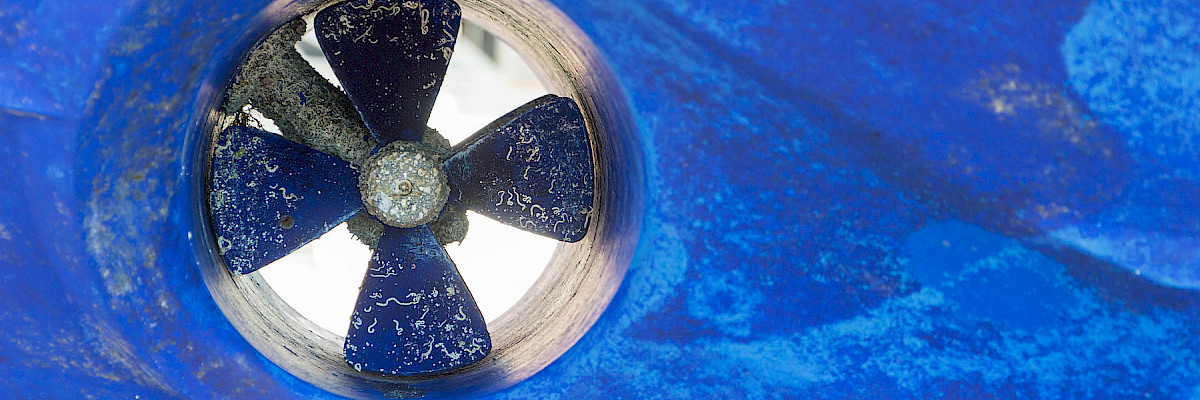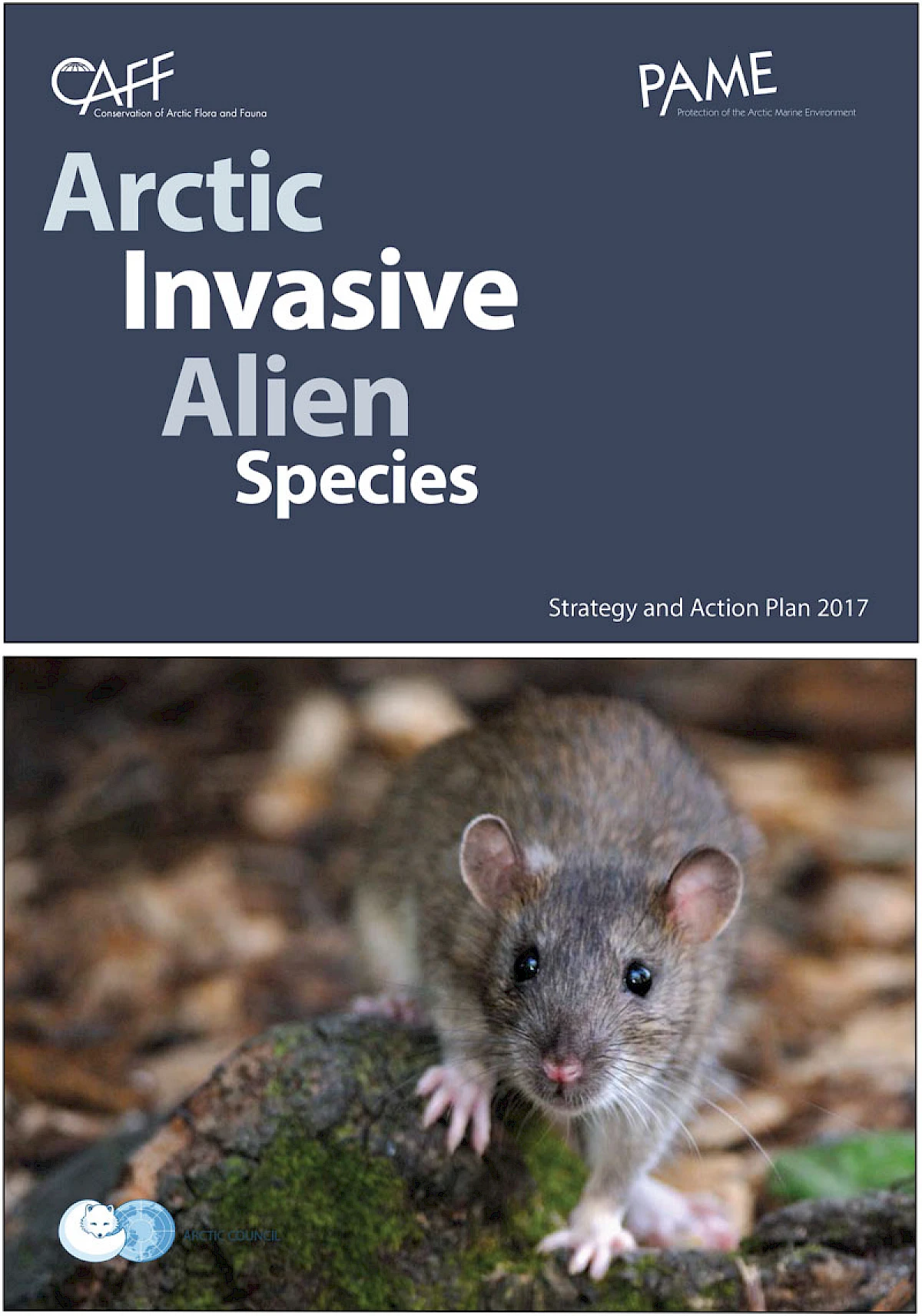
Marine Invasive Alien Species in Arctic Waters
Globally, invasive non-native species are considered the second most important threat to biodiversity after habitat loss. These are species introduced by human activity that flourish and spread in their new environment and threaten native species and ecosystem functions.
This project is part of a joint effort between PAME and CAFF to implement actions related to the Arctic Invasive Alien Species Strategy and Action Plan.
With warming climate and increasing ship traffic there has been a growing interest and concern regarding the potential for introduction of Non-Indigenous Species (NIS) and Invasive Alien Species (IAS) to and into Arctic waters. For Arctic marine species the report assessed that ships are the most common source for the introduction of Invasive Alien Species (IAS) and Non-Indigenous Species (NIS) in Arctic marine systems, through organism entrainment in ballast water and biofouling of outer surfaces.
Based on a comprehensive review of available information in over 60 databases and 100 primary publications this report presents a list of species /taxa recognised as NIS and IAS. The report present details on individual species/taxa detections in 18 different Arctic Large Marine Ecosystems (Arctic LMEs). The list includes higher total number than in other previous studies in the Arctic waters while numbers of species/taxa recorded in the current report are similar to those found in The European Marine Observation and Data Network list.
The assessment in the report indicates that ship traffic to and into the Arctic waters has had a significant increase in the period between the years 2013 to 2024. The number of unique ships entering the Arctic area has increase by around 37%. This corresponds to approximately 500 ships, in the period from 2013 to 2023. In same period the distance sailed by ships in the Arctic Polar Code Area, has increased from 6.1 million to 12.7 million nautical miles.
Risk assessments are useful tools for developing watch lists to support monitoring and management efforts and develop watch lists of potential non-indigenous species and invasive alien species. This report employs a horizon scanning of the approach used to predict species of concern to the Arctic to date. A relatively limited number of risk assessments have been done for NIS and IAS for the Arctic waters. This report highlights that the most common approach used in risk assessments in the Arctic, has been to predict species of concern with a focus on species known to be in potential source regions and/or pathways. However, experimental information on these species´ survival and reproductive thresholds is frequently lacking, especially with respect to lower thresholds at near zero and sub-zero temperatures common to Arctic waters. In addition, species distribution models only indicate the possibility of a species to establish given the current or predicted future environmental conditions and rarely consider pathways and vectors.
To address the issue of species introductions in ballast water, the International Convention for the Control and Management of Ships’ Ballast Water and Sediments, 2004 (hereafter the Ballast Water Management (BWM) Convention) and the Guidelines for the Control and Management of Ships' Biofouling to Minimize the Transfer of Invasive Aquatic Species (Biofouling Guidelines 2023) were adopted. The Convention sets discharge standards for the commercial shipping to limit the number of organisms in ballast water to minimize the introduction and spread of potentially harmful aquatic organisms and pathogens. Specifically, Regulation D-2 of the Convention states that ballast water discharged into the environment shall contain < 10 viable organisms per m3 ≥ 50 μm in minimum dimension and < 10 viable organisms per mL ≥ 10 μm and < 50 μm in minimum dimension; Regulation D-2 also specifies limits for indicator microbes.This report summarizes the BWM Convention and the guidelines in an Arctic context. As of February 2025, the BWM Convention had 97 Parties representing; out of the eight Arctic Countries, two are not Parties to the BWM Convention. Recent studies indicate that even if ships are compliant with the ballast water performance standard for indicator microbes and organisms (size class 10-50 µm), some exceed the limit for viable organism’s ≥50 µm. Therefore, it is suggested to further study the efficiency of filter mesh sizes and different filtration units associated with ballast water management systems, to improve mechanical removal of larger organisms ≥50 µm.In 2023, IMO developed non-binding Biofouling Guidelines to encourage the control and management of ships' biofouling to minimize the transfer of non-indigenous species.
Arctic marine ecosystems differ from other ocean environments and are characterized by a great variability in environmental conditions, including seasonal extremes in photoperiod, cold temperatures, river runoff and ice conditions. Factors of importance in relation to the establishment of new marine species are salinity, temperature, light condition and levels of nutrients in the waters. In line with climate change, environmental and ecological conditions in the Arctic marine areas have changed in many places. Studies have documented that in Arctic regions climate-induced changes in ocean (e.g. ocean warming) and sea ice environments (e.g. sea ice loss), combined with human activities such as shipping and aquacultute have facilitate the expansion of temperate species into the regions. Based on simulations of projected climate changes for Arctic waters will push some species out of their current ranges, whereas other species may colonize new areas.
This report is Phase 1 of a joint effort between CAFF and PAME to implement actions proposed by the Arctic Invasive Alien Species Strategy and Action Plan. A phase 2 is planned to build upon results from this report and to include aspects related to risk assessments and on develope programs for monitoring, detecting, and registering of non-indigenous species (NIS) and invasive alien species (IAS) in Arctic waters.
Increased shipping
While there are currently few known invasive non-native species in the Arctic, more are expected with climate change and increased human activity - as shipping activities increase.
In recent years, the risk of marine invasive alien species has been assessed for various Arctic marine areas.
In relation to the potential for introduction of marine nonindigenous species in the Arctic, ships are the most prevalent vector in marine systems through organism entrainment in ballast water and biofouling.
Studies of polar shipping operations have demonstrated that the external hull and ballast tanks of vessels operating in ice-covered waters can support a wide variety of non-native marine organisms.
Ballast water
Ballast water is pumped into, between, and out of ship ballast tanks to maintain safe draught, trim and stability during voyages and cargo operations. Thus, while ballast water is essential for safe and efficient modern shipping operations, it may pose serious ecological, economic and health problems to recipient regions.
Ballast water may contain marine organisms and life cycle stages that can pass through the ships ballast water intake and piping systems (i.e., viruses to vertebrates). Globally hundreds of invasions have already taken place, likely via ballast water, sometimes with devastating consequences for the local ecosystem, economy, and infrastructure.
In order to contain and minimize the risk of introducing invasive species by ballast water, the IMO adopted the International Ballast Water Management Convention (IMO BWC), which entered into force in September 2017. The IMO BWC requires ships to manage their ballast water for minimizing the risk of introducing of invasive alien species into coastal areas, including exchanging their ballast water or treating it using an approved ballast water management system.
Biofouling
Biofouling is also considered as one of the main and significant vectors for marine bio-invasions and is defined as the undesirable accumulation of marine organisms on submerged structures (including ships’ hulls and external structures, sea chests and internal seawater piping). Non-binding IMO Biofouling Guidelines were developed to encourage the control and management of ships' biofouling to minimize the transfer of invasive aquatic species.
The Guidelines were further supplemented by the Guidance for minimizing the transfer of invasive aquatic species as biofouling (hull fouling) for recreational craft. This Guidance is for use by all owners and operators of recreational craft less than 24 metres in length, which may constitute an important vector for the transfer of invasive marine species due to their large numbers and their operating profile that may make them particularly susceptible to biofouling.
The potential for invasive aquatic species transferred through biofouling to cause harm has been widely recognized. Studies show that the biofouling process begins within the first few hours of a ship's immersion in water.
ARIAS: Strategy to minimize the impact of invasive alien species
Four general approaches are used to minimize the impact of invasive alien species, each associated with a different stage in the invasion process:
1: Prevention (keeping invasive alien species from entering a new ecosystem);
2: Early Detection and Rapid Response (EDRR) (detecting and responding to an alien species before it becomes
established and causes harm);
3: Eradication (removing the entire population of an alien or invasive alien species); and
4: Control (containing or otherwise managing the population of an invasive alien species so as to minimize
spread and impacts).
Lead Working Groups
CAFFPAME
Lead Arctic States & Permanent Participants
CanadaThe Kingdom of Denmark
 Arctic Council Working Group
Arctic Council Working Group 
